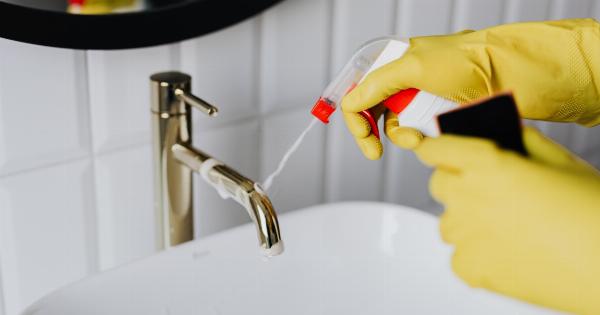Lactic acid is a naturally occurring compound in the body and is produced as a byproduct of anaerobic metabolism.
It plays a vital role in energy production and muscle function, but excessive levels of lactic acid can have negative effects on health and performance. This guide will provide an overview of lactic acid, its functions, and tips for managing excess levels.
What is Lactic Acid?
Lactic acid, also known as lactate, is a substance that is produced when the body breaks down carbohydrates for energy in the absence of sufficient oxygen.
It is primarily produced in muscle cells during intense or prolonged exercise when the demand for energy exceeds the supply of oxygen. Lactic acid is then transported to the liver, where it is converted back into glucose for further energy production.
Functions of Lactic Acid
Lactic acid serves several important functions in the body:.
- Energy Production: Lactic acid helps provide energy to working muscles during intense exercise when oxygen supply is limited.
- Buffering Capacity: Lactic acid acts as a buffer, helping to maintain optimal pH levels in the body. It prevents excessive acidity and helps regulate the acid-base balance.
- Muscle Contraction: Lactic acid plays a role in muscle contraction and muscle fiber recruitment during exercise.
- Gluconeogenesis: Lactic acid produced in muscles can be converted back into glucose in the liver, which can then be used for energy by other tissues in the body.
Effects of Excess Lactic Acid
While lactic acid is an important compound, excessive levels can have negative effects on health and performance. Here are some common effects of excess lactic acid:.
- Muscle Fatigue: Accumulation of lactic acid in muscles can contribute to muscle fatigue, making it harder to sustain intense exercise or physical activity.
- Muscle Soreness: Excess lactic acid production is often associated with delayed onset muscle soreness (DOMS), which commonly occurs after strenuous activity.
- Decreased Performance: Elevated lactic acid levels can impair muscle function and performance, leading to decreased athletic performance and endurance.
- Metabolic Acidosis: Excessive lactic acid production can lead to a condition called metabolic acidosis, where the pH of the blood becomes too acidic. This can cause symptoms like fatigue, confusion, and shortness of breath.
Managing Excess Lactic Acid Levels
Fortunately, there are several strategies that can help manage and reduce excess lactic acid levels in the body:.
1. Gradual Progression
When starting a new exercise program or increasing the intensity of your workouts, it’s important to progress gradually. This allows your muscles to adapt and build tolerance to lactic acid buildup.
Gradually increasing the intensity and duration of your workouts can help minimize the accumulation of lactic acid.
2. Proper Hydration
Staying hydrated is crucial for optimal muscle function and waste removal. Drinking an adequate amount of water before, during, and after exercise helps flush out lactic acid and other metabolic byproducts from the muscles.
Aim to drink at least 8 glasses of water per day and increase your intake during intense workouts.
3. Balanced Nutrition
Eating a well-balanced diet that includes carbohydrates, proteins, and fats is essential for managing lactic acid levels. Carbohydrates provide the necessary fuel for energy production, while proteins support muscle repair and growth.
Including healthy fats in your diet helps optimize hormone production and overall metabolic function.
4. Active Recovery
Engaging in light, low-intensity exercise or activities on your rest days can help promote circulation and remove lactic acid from the muscles.
Active recovery exercises like walking, swimming, or stretching help enhance blood flow, which aids in lactic acid clearance and reduces muscle soreness.
5. Cooling Down
When finishing a workout, it’s important to allocate time for a proper cool-down routine. Cooling down allows your body to gradually transition from a state of intense activity to a resting state.
This can help prevent lactic acid buildup and reduce the risk of muscle soreness and stiffness.
6. Massage
Regular massage therapy can help loosen tight muscles, improve circulation, and aid in the removal of lactic acid. The pressure applied during a massage helps break down adhesions and knots, allowing for better blood flow and lymphatic drainage.
7. Breathing Techniques
Deep diaphragmatic breathing can help increase oxygen supply to the muscles and reduce the accumulation of lactic acid.
Practice deep breathing exercises regularly, especially during intense exercise, to improve oxygenation and minimize the production of lactic acid.
8. Supplementation
Supplements like beta-alanine and sodium bicarbonate have been shown to reduce the buildup of lactic acid and delay the onset of fatigue during intense exercise.
However, it’s important to consult with a healthcare professional before starting any new supplements to ensure they are safe and suitable for your individual needs.
9. Get Adequate Rest
Proper rest and recovery are essential for managing lactic acid levels and optimizing performance. Aim for 7-9 hours of quality sleep each night to support muscle repair, hormone balance, and overall recovery.
10. Medical Intervention
In rare cases where excessive lactic acid buildup is a result of an underlying medical condition, medical intervention may be necessary.
If you are experiencing persistent symptoms or have concerns about your lactic acid levels, consult with a healthcare professional for a proper diagnosis and guidance.




























